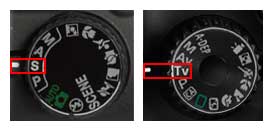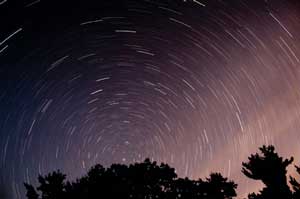Shutter Speeds – Shooting Modes
Shooting Modes
A variety of modes allow for shutter speed control. Auto and Program only allow the bare minimum of adjustments, and shutter speed is not one of them. Various scene modes on your camera are likely to alter the shutter speed to suit the subject.
Moving away from these settings to Shutter Priority or Manual modes will provide absolute control over the shutter – within the parameters of correct exposure for the former, and to any exposure time with the latter. One additional benefit of DSLRs, and some advanced compact cameras, is the ability to shoot in Bulb mode – this allows the shutter to remain open for an extended period of time, which is perfect for extremely long exposures.
 Shutter Priority
Shutter Priority
Most DSLRs feature a dedicated mode dial, with shutter priority being clearly marked as an ‘S’ or ‘Tv’ option. This will differ depending on manufacturer, with the majority opting for ‘Shutter’ (‘S’), but both Canon and Pentax using the ‘Time value’ (‘Tv’) marking. A further ‘TAv’ mode features on Pentax models that allows for control of both the shutter and aperture, with the camera auto-adjusting the ISO sensitivity.
 Bulb Mode
Bulb Mode
One of the benefits of a DSLR is that it’s possible to shoot in Bulb mode, thus enabling extended exposures well over the common 30 or 60-second maximum duration. Bulb mode enables creative images to be made, such as the motion of star movement taken over several hours. A remote release is useful to start and stop the shot. Also it’s integral not to move the camera in shot, as hours of exposure time would be ruined with a slight knock.




